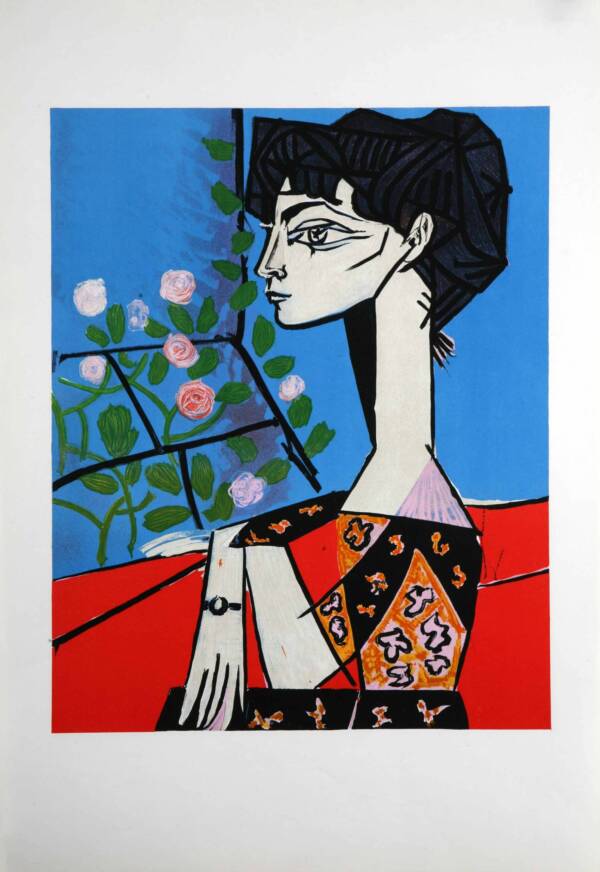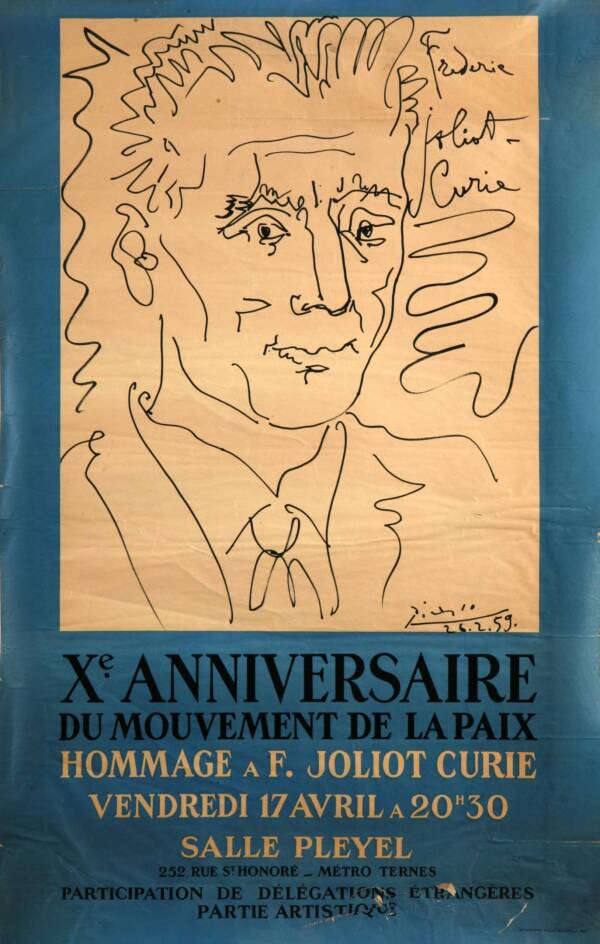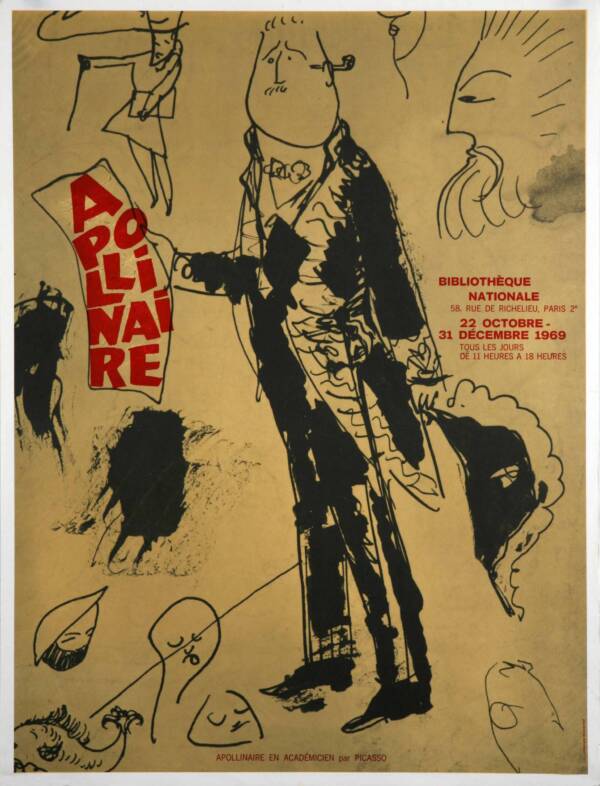Descripción
Neither this poster nor its motif have been reproduced on other posters. However, there are two identical posters that use the same motif but in different formats. They correspond to the exhibitions organized by the Ministry of Culture, Directorate General of National Heritage, Archives and Museums, in Barcelona and Madrid, 1980 and 1981 respectively, to show the collection of original graphic works by Picasso in the Spanish State.
This poster reproduces an oil painting that Picasso kept and that, ceded by his heirs in payment of inheritance tax, is now part of the collection of the Musée Picasso in Paris. Picasso made this painting together with a series of engravings on the same subject. In 1951 Picasso painted a series of works dealing with chivalric scenes in which he treated the subject with a great sense of humour.
Regarding these works, in the creation of which Kahnweiler was present on many occasions, Cabanne, who was also present at the conversation with Françoise Gilot about the coat of arms, comments that “Françoise pointed out that the coat of arms was not historically accurate. Pablo insisted that it was, adding that the knight’s thin neck was not possible in reality, ‘but no one would notice it’. Françoise said that she had no documented knowledge of knights’ clothing, but the details were impressively accurate.” In response to these comments, Picasso told Kahnweiler: “You can be sure of one thing: if I continued to draw medieval knights like these, I would end up knowing what the smallest button on their trousers looked like.”
Apart from its unusual subject matter, this painting exudes an air of humour and sly banter that makes it very interesting. The Master seems to have let his imagination run wild here. The humorous atmosphere is created by the unusual drawing of a horse’s head, with its mouth open and its teeth showing, either because the rider has roughly brindled it or because it is laughing at the spectacle.
What is striking in this painting is Picasso’s characterization of the characters with an irony that is found both in the features of the pages and in the face of the priest who attends the nobleman’s departure with an attitude of hypocritical humility and concern. Equally ironic are the details of the armor and the rococo attire of the steed.
As for the coloring used, the painting is particularly attractive due to the bold but appropriate color combinations used, especially the blue of the sky, the yellow of the walls and the gray of the roofs, which allowed him to successfully contrast the steel fittings of the nobleman’s armor and the ornamentation of the stirrups, which combine very well with the vermilion of the pages’ clothing.



